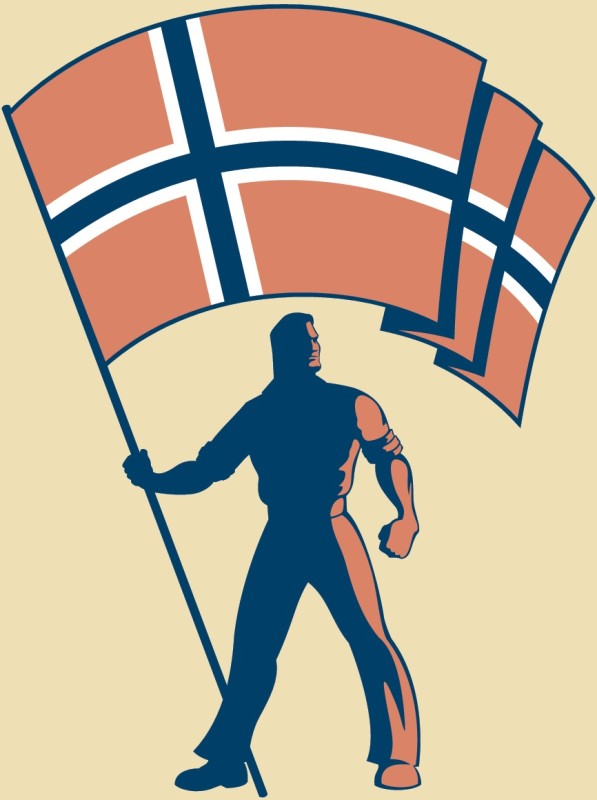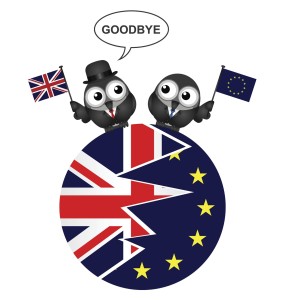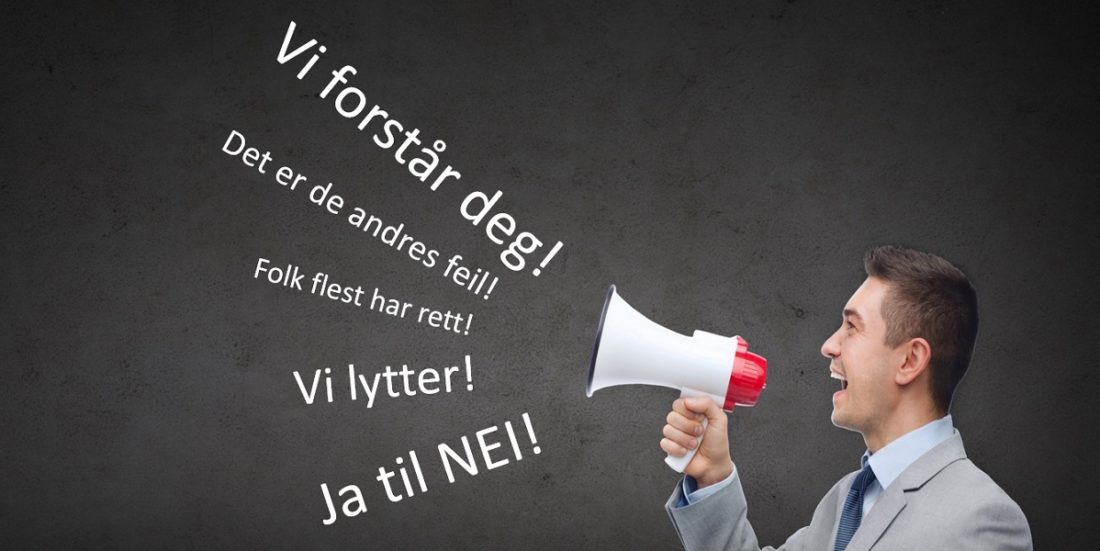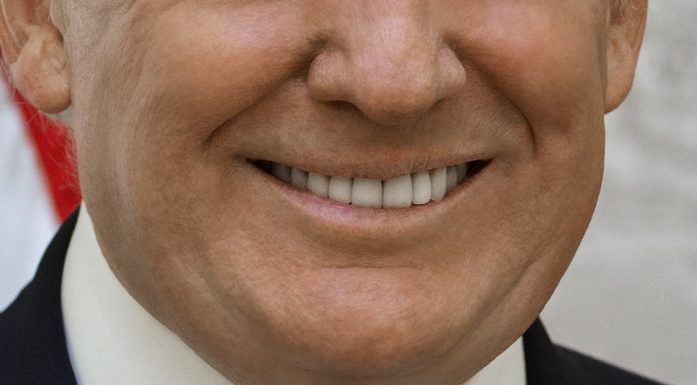Why are populists successful?
Populist parties have long had the wind in their sails. And yet researchers know very little about how populists communicate or how populist messages influence voters.
POPULISM: Both Donald Trump and Bernie Sanders have been referred to as populists in the US presidential election campaign, and in Norway, some people give the Progress Party and the Socialist Left Party the same label.
Populist actors like to present themselves as representatives of “the people”. Some would also say that populists employ a special form of rhetoric, that they blow with the political wind, and that they are far more dependent on the media to get their message out, as compared with other political actors. But what does the research show?
“Populism as a research field has suffered from a lack of consensus on what populism is,” says Toril Aalberg at NTNU’s Department of Sociology and Political Science. She poses the question, “Are we talking about an ideology, actor qualities or a style of communication?”
Aalborg is researching media and politics, and she heads up a network of scientists from 31 European countries, who together have reviewed everything that has been written about populism and populist communication in 24 of these countries.
“We’ve confirmed that we know surprisingly little about how populists communicate – and we know even less about how populist messages affect us as voters. But the review has affirmed our understanding of populism as a style of communication. It’s not Donald Trump’s personal characteristics that make him a populist, but rather the characteristics of his message,” says Aalberg. She points out that far from everyone thinks Trump can be classified as populist, though—because he doesn’t claim to represent “most people “. Yet others point to his declaration as the voice of hard-working—and forgotten—men and women.
Reference to popular will
The very reference to “most people” is the cornerstone of the populist message.

The strongest form of populism, complete populism, includes attacks both on the elite and various minorities. Illustration: Thinkstock
“The message emphasizes that the party or the politician is speaking on behalf of “ordinary folks” or “most people”, and that society’s sovereignty lies in this majority of the people. It is assumed that the people, i.e. the majority, have a common will, with identical interests and values. This popular will is often presumed to oppose the interests and values of groups that do not represent the people,” says Aalberg.
The populist message therefore also tends to contain criticism of elite groups or attacks on various minorities – or both.
“These minorities and elites are considered dishonest and immoral, compared with the honest and decent majority who suffer because elite and minority interests get pushed through,” Aalberg adds.
The understanding of populism as a communication style helps researchers to distinguish between different types of populism:
• empty populism
• exclusionary populism
• anti-elitist populism
• complete populism
These types of populism capture the full range of populist parties. The empty form of populism can for example be used by most political parties, if they claim that they represent the people, but do not criticize minorities or elites as part of their message.
Populist parties on the left refer to the popular will and are often highly critical of the elite, but their message rarely contains criticism or exclusion of minorities.
Exclusionary populism tends to blame cultural, religious or sexual minorities for creating major problems for decent people, without criticizing the elite.

Populist parties on the left refer to popular will and are often highly critical of the elite. Photo: Thinkstock
“The strongest form of populism, complete populism, includes attacks both on the elite and on various minorities. Complete populism characterizes the political message of most of Europe’s right-wing populist parties,” says Aalberg.
She also points to Norwegian Progress Party leader Siv Jensen, who in 2007 said she was proud to be the leader of a populist party. In 2013 however, before the last general election, Jensen emphasized that the party she led was not populist.
“The change in message was due to the context. In 2007, it was less problematic to speak on behalf of “most people” while being critical of minorities and the elite. By the 2013 election, the memory of the Oslo terrorist attacks on 22 July of that year was still strong, and the party was about to gain parliamentary power for the first time. Europe had also seen an emergence of more radical right-wing populist parties, which the Progress Party clearly did not want to identify with,” Aalborg says.
- You might also like: Democracy doesn’t happen automatically
Populism isn’t just negative
The phenomenon of populism is not new, but the recent “wave” of populism in Europe, with politicians like Pia Kjærsgaard, Pim Fortuyn, Jörg Haider and Jean-Marie Le Pen, is clearly linked to two different circumstances: the fiscal and Euro crisis and increased immigration.

The Brexit referendum showed to some extent that democracy works, regardless of whether one agrees that the people should make this kind of decision. Illustration: Thinkstock
Traditionally, Western Europe has had right-wing populist parties, according to Aalberg. Sweden was an exception for a long time, but that was before the emergence of the Sweden Democrats. Germany had long had only one clearly left-leaning populist party, because the country’s historical context made it difficult for political parties to gain ground by excluding defined minorities from “the people.” Increased immigration has also led to right-wing populist parties emerging in Eastern Europe.
Aalberg is still careful to emphasize that not all populism is necessarily “dangerous”.
“Populism can have a democratic purpose, in that it acts as a ventilation valve that brings people back into the democratic system. There’s a big difference between populists and more extreme actors that reject democracy and resort to violence to reach their goals,” she says, referring to Brexit, Britain’s withdrawal from the EU.
Aalberg says the Brexit vote left the elites “sitting there, deeply shocked by the outcome of the referendum.” Meanwhile, she adds, “society has long been permeated by mistrust that hasn’t been taken seriously. The result of the vote shows to some extent that democracy works, regardless of whether one agrees that the people should make this kind of decision.”
Media can also be populist
Although little research exists on how populists communicate, and how they use the media and vice versa, researchers have uncovered some major patterns in the media coverage of populist parties in Europe.

Because of the anti-elitism that characterizes many populist messages, negative coverage doesn’t necessarily hurt support for populist parties or candidates. Illustration: Thinkstock
To start with, this media coverage has increased considerably, and rising support for populist parties in the polls has often followed. Secondly, much of the media coverage makes negative reference to the populist parties or candidates.
“Because of the anti-elitism that characterizes many populist messages, negative coverage won’t necessarily hurt support for the populist parties or candidates. Negative media coverage may even have a positive effect if it can be used to illustrate how the media are part of the elite who want to attack those who really represent the people,” says Aalberg.
The researchers note that much of the critical coverage is based on a concern for the condition and development of democracy.
Aalberg also points out that the media itself may promote a populist message, by claiming that they speak on behalf of “most people”. Norway’s TV2, for example, has been accused of acting as a populist actor. This resulted partly from the channel’s debate program, which constantly highlighted opinion polls conducted among TV2 viewers. TV2 presented the polls as if they mirrored people’s opinions generally, and also asserted that the elite or various minorities were creating major problems for these people. TV2’s news coverage has also been regarded as essentially different from that of the Norwegian Broadcasting Corporation (NRK).
“NRK reported more news from Parliament and from discussions on government decisions. TV2 was concerned with seeing things from the perspective of the common man, and revealing the elite’s abuse of power,” says Aalberg.
She adds that in some countries, media channels are closely linked to specific populist parties. Most are Eastern European examples, but Western Europe also has close links between populist parties and the news media. The most famous example is probably Silvio Berlusconi’s power over the Italian media, but in Switzerland, some chief editors are Swiss People’s Party members of parliament.
The European research network that Aalberg leads will further investigate the effects of populist messages on voters, and the relationship between populist actors and the media. What happens if you have a political message, and then add that you speak on behalf of most people? What happens if you also criticize the elite or minorities?
Although the researchers’ understanding of these issues is still limited, a Dutch study suggests that when “normal” political parties use this style of communication, they are punished for it – but traditional populist parties are not.






